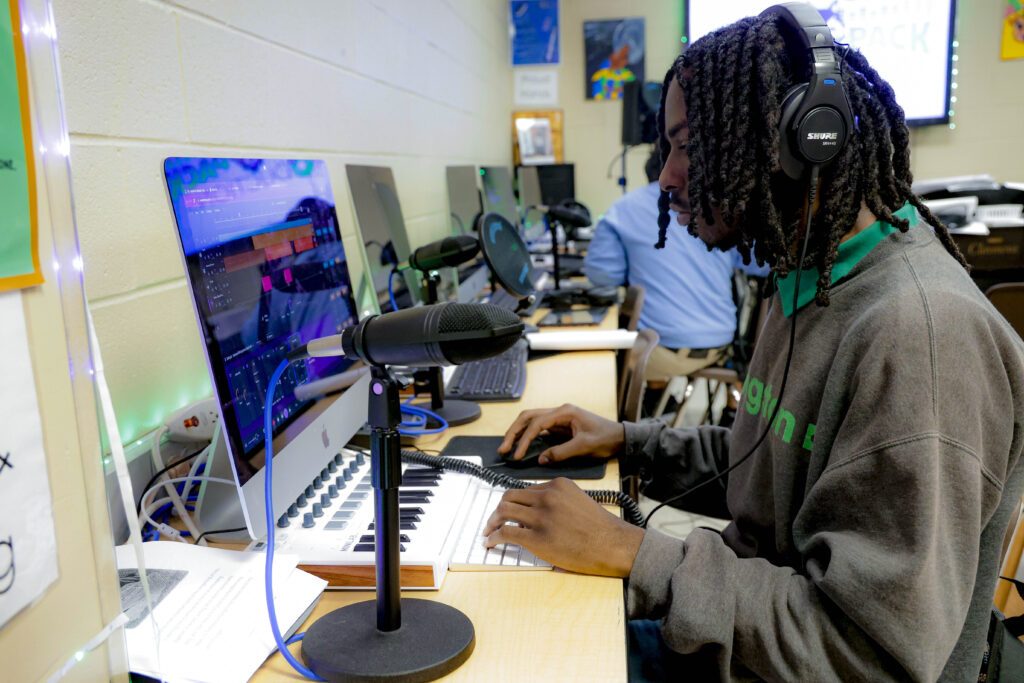Beginner’s Guide to Music Technology and Digital Tools
Music technology is an umbrella term for any device, tool, or machine used to create and/or perform music. Producing a song in a studio, performing with a microphone, running your electric guitar through effects pedals, and making a beat through an app on your phone are all examples of using music technology. You’ve likely used music technology many times without even realizing it! Here are a few main ideas to help you understand the world of music tech at a glance.

Recording
Recording is the process of capturing audio and/or MIDI performances. Traditionally, recording began with the use of analog hardware like tape machines in recording studios, but nowadays the vast majority of music is recorded digitally using a Digital Audio Workstation or DAW.
What is a DAW?
A Digital Audio Workstation (or DAW), is software used to record, edit, and produce music. Some DAWs are downloaded software, and some DAWs are available via a web browser. DAWs provide a comprehensive suite of tools and features that allow users to manipulate sound in various ways, including:
- Recording Audio: Capture live audio through microphones or instruments connected to an audio interface.
- Sequencing MIDI and Virtual Instruments: Record and/or manually program melodies, drum patterns and more using virtual instruments. MIDI controllers can be utilized as an accessory to enhance workflow and creativity.
- Editing: Cut, copy, paste, manipulate, rearrange musical clips.
- Mixing: Adjust signal levels and apply effects to balance multiple tracks.
- Using Plugins: In addition to what your DAW provides, you can also download additional third party software instruments and effects, or “plugins”.
The main features of a DAW are a mixing console, multi-track recording, built-in instruments and audio effects, and a timeline. This workflow may look a little familiar to those who have used video editing software. Each DAW has its own unique strengths, interface, and workflow, catering to different types of users and production needs. Some popular DAWs include Ableton Live, Garageband, Logic Pro X, FL Studio, Pro Tools, Soundtrap, and Cubase. Learn more about the selecting the right DAW for your classroom on the Teacher Station page.
🎯 Straight to the point: A DAW is what you use to make music on your computer.
Producing
As much as an art form as a technical discipline, music production is the process of bringing a musical idea to life in a recording. The role of a producer doesn’t look the same for every person or every project, but fundamentally revolves around enhancing the meaning and sonic quality of a song. Producers consider things like songwriting, structure, instrumentation, arrangement, composition, sound design, among many other aspects of a musical recording.
🎯 Straight to the point: Producing is the marriage of technology and creativity to record a song.
Performing
Music technology is used in a variety of applications for live sound and musical performances. Although music tech is not required to perform acoustically, it is used any time there is a need for amplification. Music tech used for performances includes microphones, electronic instruments, effects pedals, PA systems, speakers, amplifiers, and more.
⭕ Check it out: Learn How to Make Your Own Beats
Table of contents
